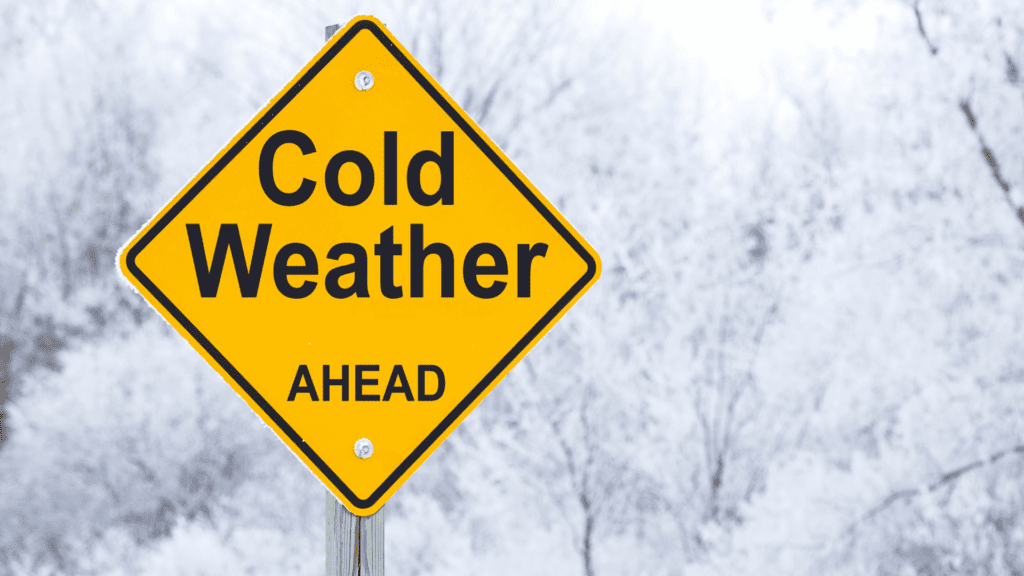When the temperatures start to drop, it’s important to take steps to keep your workers safe. There are several hazards when it comes to winter weather. People in a variety of occupations such as construction, snow removal, oil and gas production, utility repair, policing services, and the postal industry can be exposed to life-threatening cold temperatures. But outdoor workers aren’t the only ones at risk of developing cold stress; those who work in refrigerated warehouses or grocery stores’ frozen food sections can also be adversely affected by these frigid conditions.
Fortunately, there are measures that employers can take to protect their employees from the cold.
What is Cold Stress?
Per the National Institute for Occupational Safety and Health, cold stress is an extremely serious condition that can occur when our bodies are unable to maintain their usual temperatures. It can cause permanent tissue damage or even death if not addressed promptly.
During cold weather, the body must work hard to sustain its temperature. As cold air pulls heat away from your core – chest and abdomen – blood flow is redirected from skin of hands, arms, feet and legs resulting in rapid cooling which can lead to dangers like hypothermia, frostbite or even trench foot if exposed to moisture.

Symptoms of Cold Stress
Cold stress can lead to serious conditions such as hypothermia, frostbite, and trench foot.
Hypothermia in the Worker
When subjected to frigid temperatures, the body can’t generate heat quickly enough – leading to a rapid decrease in internal temperature. This prolonged chill may cause hypothermia if not addressed promptly.
Hypothermia detrimentally affects the brain, causing a person to think and move sluggishly. This is especially hazardous because victims of hypothermia often cannot recognize its symptoms or make life-saving decisions due to impaired mental capacity.
Symptoms of hypothermia can depend on how long a person has been exposed to cold temperatures and individual variability.
Early symptoms can include shivering, fatigue, loss of coordination, confusion, and/or disorientation. Late symptoms include no shivering, blue skin, dilated pupils, slowed pulse and breathing, and/or loss of consciousness. If hypothermia is suspected, medical assistance should be requested immediately (e.g., call 911).
Begin first aid by:
1. moving the worker to a warm room or vehicle
2. removing wet clothing
3. covering their body with loose, dry blankets, clothing, or towels (may use skin-to-skin contact or warm bottles or hot packs in armpits, sides of chest, and groin to increase body’s temperature)
4. providing warm, non-alcoholic beverages if the worker is conscious.
Trench Foot Signs and Symptoms
Trench foot is a serious injury that can occur when your feet are exposed to cold and wet conditions for long periods of time. To protect against heat loss, the body restricts blood flow in the legs which results in tissue death.
Symptoms you may experience with trench foot include numbness, reddening of skin, swelling and tingling pain, as well as more severe ones such as blisters or ulcers along with bleeding under the skin – even gangrene (ex: purple/blue/gray discoloration). It’s essential to take precautions if you suspect any risk of contracting trench foot so ensure proper prevention methods are taken!
Frostbite in the Workplace
Frostbite is an ailment caused by the freezing of skin and underlying tissues, resulting in diminished sensation and discoloration of the affected areas. Unfortunately, it can have lasting damage to body tissue – with more serious cases leading to amputation.
Risk factors that are associated with frostbite include exposure to water or metal surfaces, dehydration, diabetes, cigarette smoking or alcohol abuse as well as taking medications which reduce judgment and alertness levels; plus those who had previous experience with frostbite may be at higher risk for a recurrence.
Symptoms of frostbite include numbness; tingling or stinging; aching; and bluish or pale, waxy skin. During treatment of frostbite and trench foot, avoid rubbing or putting pressure on affected areas, since that can damage tissue.

Recommendations for Keeping Employees Safe in the Cold
Employers and employees alike should be vigilant in monitoring the visible signs of cold-induced issues, both indoors and outdoors. They must alert their supervisor quickly if they notice any symptoms arising in themselves or their colleagues and promptly provide first aid before seeking medical assistance (e.g., calling 911).
Prevention is the best way to avoid cold-related illness and injury. Employers and workers should follow the NIOSH recommendations below to reduce the risk of cold-related illness and injury.
No matter the environment, employers should prevent cold stress injuries by:
- Train supervisors to prevent, recognize, and treat cold induced illness/injury
- Provide training in a language and vocabulary that the workers understand.
- Reduce workers’ time spent in the cold environment.
- Reduce the physical demands of workers (e.g., use relief workers or rotate extra workers in and out of work for long, demanding jobs).
- Ensure access to warm areas and a place to change out of wet clothes.
- Encourage employees to take breaks to warm up when needed.
- Monitor workers in cold conditions and initiate a buddy system.
- Include a medical and environmental thermometer and chemical hot packs in first aid kits. Participate in joint management/employee safety committees.
- Provide appropriate cold weather gear such as hats, gloves, and boots for work in cold environments.
- Provide wind protective clothing based on air velocities.
- Provide prompt medical attention to workers who show signs of cold-related illness or injury
Individuals should help prevent serious illness/injury from the cold by:
- Take regular breaks to warm up.
- Monitor their physical condition and that of coworkers.
- Stay hydrated by drinking lots of water; warm beverages may help increase body temperature.
- Stay well nourished by snacking on high carbohydrate foods.
- Avoid touching cold metal or wet surfaces with bare skin.
- Report signs and symptoms of cold-related illness and injury to supervisors and medical staff immediately.
- Participate in joint management/employee safety committees.
- Carry extra cold weather gear, such as a change of clothes, in case work clothing gets wet.
- Wear several layers of loose clothing for better insulation; take layers off if you begin to sweat and put them back on when you cool down. Inner layers should be wool or synthetic fabrics to wick away moisture; outer layers should be wind and water-resistant.
- Avoid wearing wet clothes.
- Protect the ears, face, hands, and feet by wearing hats, gloves, socks, and boots.
Conclusion
In conclusion, cold weather can be a dangerous element to work in and should not be taken lightly. Employers need to take the necessary precautions to ensure their employees are safe by providing training on how to recognize signs of frostbite or trench foot, reducing physical demands, encouraging regular breaks for warming up, monitoring workers in cold conditions and providing appropriate gear such as hats gloves and boots.
Employees also have an important role when it comes to preventing serious illness or injury from the cold – they must monitor themselves, stay hydrated and well nourished while wearing layers of loose clothing with wind-resistant outerwear. By following these recommendations both employers and employees will help reduce the risk of becoming victims of a harsh winter season.
Contact WorkSafe to find out how we can help your company today!
Working to keep you safe, healthy, and productive,

References:
Alaska Trauma Registry, http://dhss.alaska.gov/dph Emergency/ Pages/trauma/registry.aspx
Ceballos D, Mead K, Ramsey J [2015]. Recommendations to improve employee thermal comfort when working in 40°F refrigerated cold rooms. J Occup Environ Hyg 12(9):D2216.
OSHA [2014]. Emergency preparedness and response safety and health guidelines — cold stress guide. Washington, DC: U.S Department of Labor, Occupational Safety and Health Administration, https://www.osha.gov/SLTC/emergencypreparedness/guides/cold.html
State of Alaska DHSS [2014]. Cold injuries guidelines. Juneau, AK: Department of Health and Social Services, Division of Public Health, Section of Emergency Programs, Emergency Medical Services (EMS) Program, http://dhss.alaska.gov/dph/Emergency/Documents/ems/documents/Alaska%20DHSS%20EMS%2Cold%20Injuries%20Guidelines%20 June%202014.pdf
